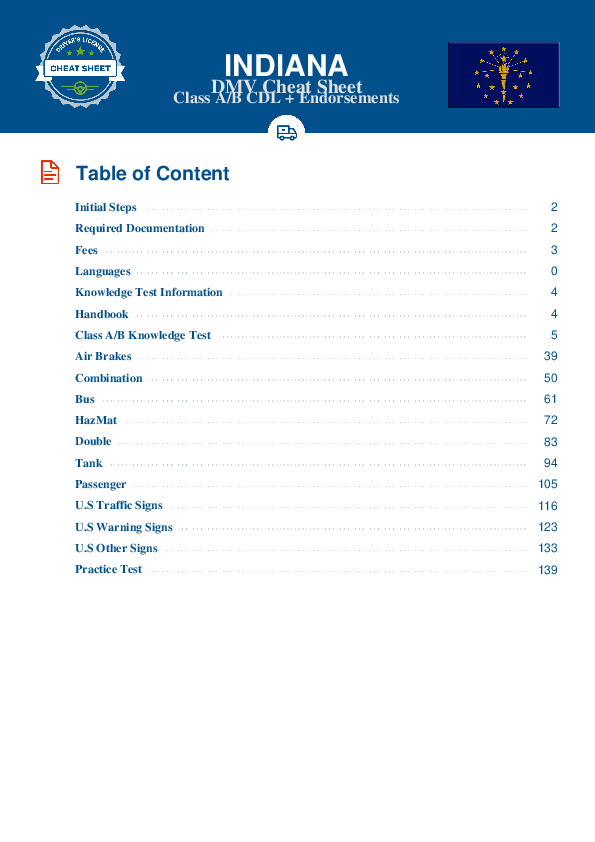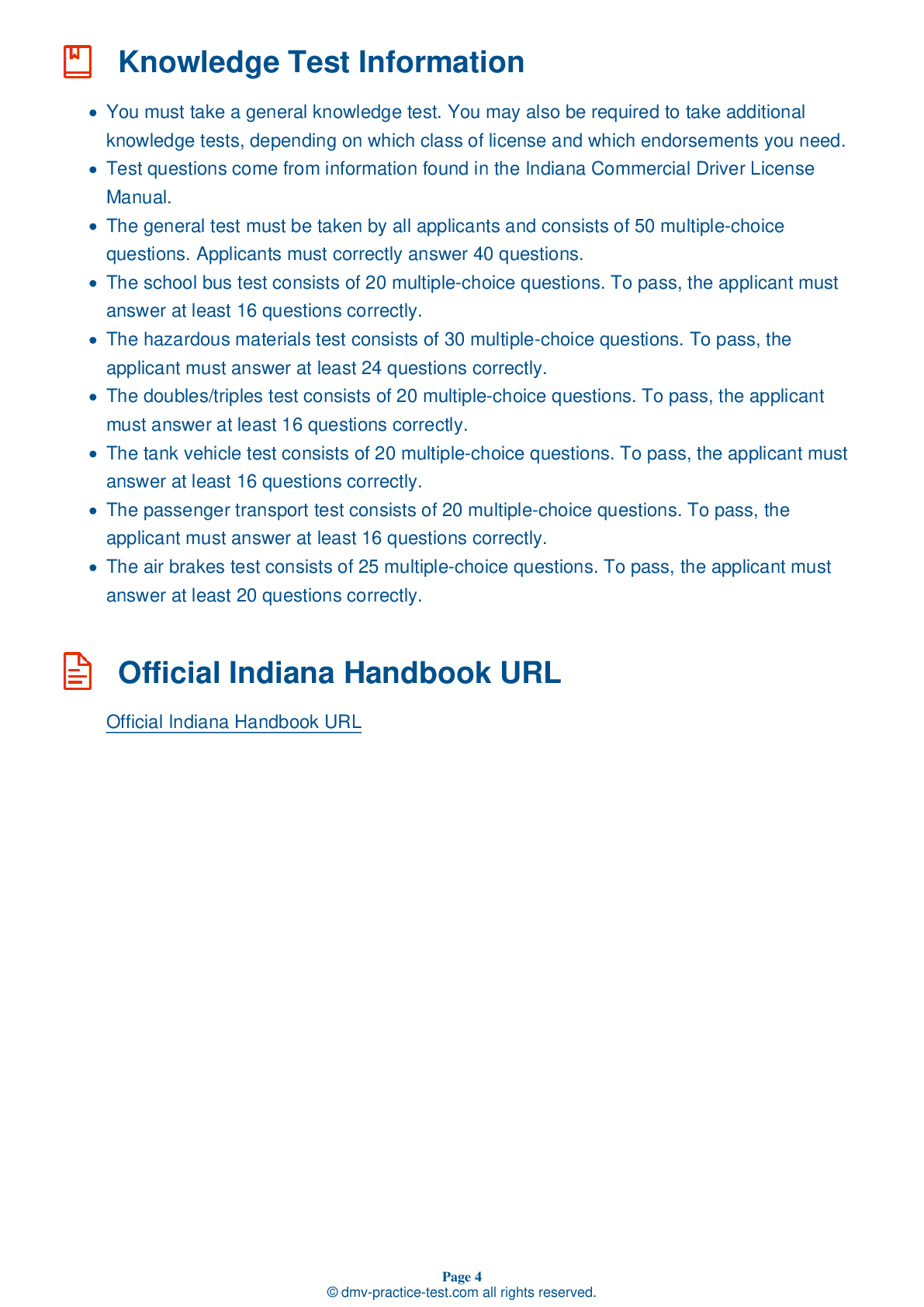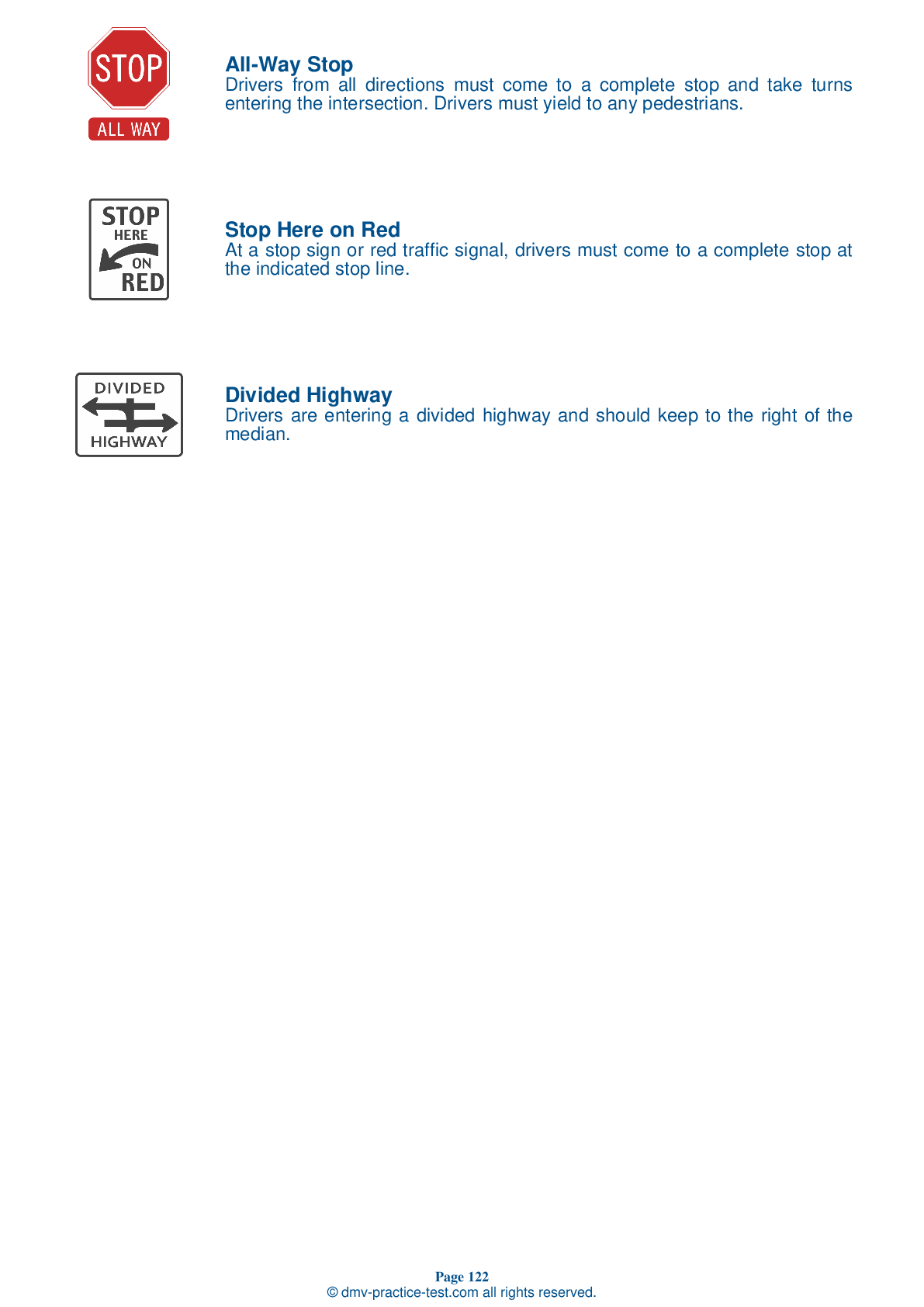Air Brakes Endorsement Test | Indiana 2025 #2 Page 2 of 4
Train for FREE online with our Indiana CDL air brake test. The official exam test consists of several obligatory parts, with all of them checking your knowledge of different blocks of road rules. If you need to obtain a IN Class A/Class B driver license in 2025, practice as much as possible. Free sample tests published on our website will help you check and improve your knowledge and boost your grades. Please bear in mind that the requirements for CDL may vary from state to state.
7 . Which type of brakes do most heavy-duty vehicles have?
For safety, most heavy-duty vehicles are equipped with dual air brake systems.
8 . During an applied leakage test, the maximum leakage rate for a single vehicle with air brakes is:
It is important to know the maximum air loss rate that is safe for your specific vehicle. A single vehicle with air brakes should have a leakage rate no higher than 3 psi in a minute during an applied leakage test.
9 . A low air pressure warning signal should activate:
In an air brake system, a low air pressure warning signal must come on if air pressure in the tanks falls below 55 psi. This warning signal may come in the form of a light, a buzzer, or a wig wag.
10 . If a vehicle has air brakes, the air compressor drive belt should be checked before each drive. In what condition should the belt be?
When inspecting a vehicle with air brakes that has a belt-driven air compressor, you should check the condition and tightness of the belt. It should be in good condition.
11 . When a brake pedal is pressed and the S-cam is turned, the S-cam:
When a brake pedal is pressed and the S-cam is turned, the S-cam presses the brake shoes against the inside of the brake drum. This causes friction and will cause the vehicle to slow.
12 . What happens if brakes become too hot?
If brakes are overused, they may overheat and stop working. This is referred to as brake fade.
See the exact questions that will be on the 2025 Indiana DMV exam.
99.2% of people who use the cheat sheet pass the FIRST TIME
Lillian MCcranie explains how our CDL study guide was helpful in passing the exam and recommends it to everyone.
Cameron tells us how he purchased the CDL exam, and found it to be a useful tool which helped him pass the exam and find a job.



